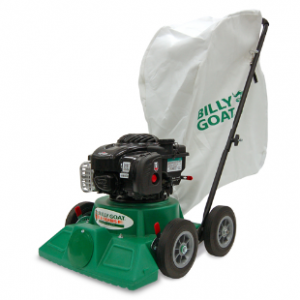 Late summer and early fall lawn care involves a lot of debris: there’s thatch to lift off the soil, leaves that need to be removed as they fall from the trees, and even increased grass clippings in areas where water restrictions are lifted as temperatures fall. Properly disposing of all that material doesn’t just keep HOA’s happy and avoids breaking city ordinances, it also helps protect the environment by stopping algae blooms that can harm wildlife.
Late summer and early fall lawn care involves a lot of debris: there’s thatch to lift off the soil, leaves that need to be removed as they fall from the trees, and even increased grass clippings in areas where water restrictions are lifted as temperatures fall. Properly disposing of all that material doesn’t just keep HOA’s happy and avoids breaking city ordinances, it also helps protect the environment by stopping algae blooms that can harm wildlife.
Yard Waste, Fertilizer and Algae Blooms
If leaves and grass clippings end up on the pavement, they’ll eventually be drawn into the drainage system. Most of these systems empty directly into waterways. Once there, the same organic material that could be feeding the lawn feeds algae instead, causing blooms.
Regular algae blooms can remove oxygen from the water, block light and even clog fish gills, killing aquatic life. Although much rarer than green algae, cyanobacteria (blue green algae) blooms release toxic chemicals that kill aquatic life and cause organ and nerve damage in humans, forcing the shutdown of recreational areas.
The problems aren’t just with grass and leaves. Like grass, algae thrives on phosphorus and nitrogen, which can be supplied by runoff from excess fertilizer.
Reducing the impact of lawn waste and fertilizer is a matter of both managing the lawn to reduce the need for soil correction while making sure the right amount of fertilizer is applied to bring everything back in balance.
Turning a Lawn into a Waste Eating Machine
The more mulch that is handled on site, the less waste there is to dispose of. A mulching mower can turn grass clippings and leaves into small pieces that can be easily digested by the microorganisms on the lawn’s surface, returning nutrients to the soil. If it’s necessary to remove material for weed control or other issues, it should be bagged by the mower or collected using lawn vacuums and blowers. Side discharge mowing should be avoided wherever possible since it lets debris roll off the lawn and onto the pavement where it can make its way into storm drains.
Bald spots can’t digest mulch, but those areas can be recovered through overseeding. In transitional areas across the central U.S, seeding cold grasses can keep the lawn active as warm grasses go into hibernation, letting the lawn can digest more material.
Dethatching increases the access the soil has to air and water, but it shouldn’t be necessary unless there’s something wrong with how the lawn is being taken care of. In most cases, excessive thatch is caused by mowing the lawn too short or applying too much fertilizer. Mulching can actually reduce thatch since it helps build an environment where microorganisms can thrive and break down woodier plant material. Aerating also improves nutrient access and is helpful on almost any lawn.
Using Fertilizer Correctly
There are plenty of fall fertilizers on the market, but the only way to know which one to use and what amount to use requires soil testing. Send out samples at least two weeks before you plan on fertilizing to give the lab time to process the results. For the most accurate information, send two samples: one from an area in the best condition, and one in an area with problems like bald spots or weeds. If you’re keeping the grass healthy with good lawn care practices, the amount of fertilizer needed will be minimal.
Dealing with Lawn Debris for Minimal Impact
If it can’t be mulched into the soil and there isn’t a way to set up a mulch or compost pile on site, leaves and grass clippings need to be taken to an off-site compost pile. Dethatching will remove so much woody material that removal will almost always be required, while the acidity of leaves can cause issues with sandy soils, requiring disposal no matter the circumstances.
Thorough collection can reduce the environmental impact: picking up leaves that have been pushed out of the yard will keep them from getting into waterways. Using a four stroke walk-behind blower or lawn vacuum can reduce air pollution relative to two stroke blowers while getting the job done faster. A truck loader also helps get as much of the leaves as possible off of the lawn when loading them for transport.
Keep Your Billy Goat Equipment Ready to Work
Billygoatparts.com is a certified dealer for Billy Goat and their engine suppliers, so we have everything you need for their blowers, aerators, overseeders, dethatchers and more. Our site has built-in factory parts diagrams so you can see the parts you’re searching for and how they fit on your equipment. We can ship your order anywhere in the U.S. and Canada.
